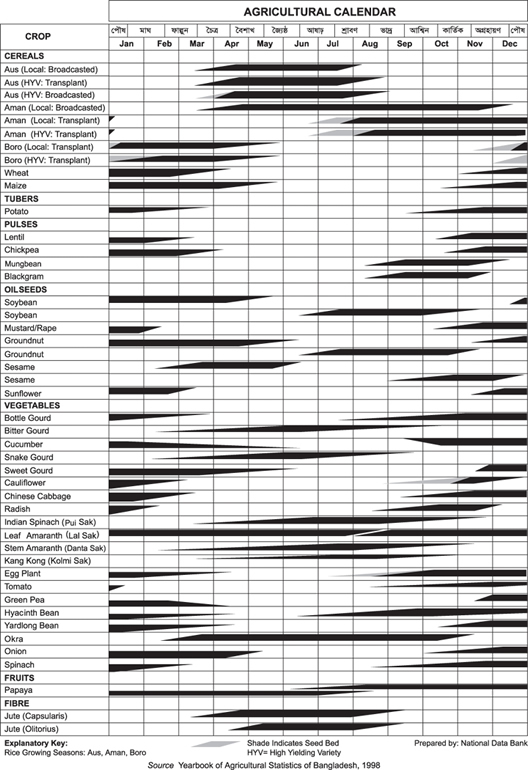Agricultural Calendar
Agricultural Calendar sequential annual activities of production technology with respect to crop, land preparation, manuring/fertilization, sowing/planting, weeding, irrigation/drainage, disease/insect pest control, harvesting, etc.

An agricultural calendar helps in knowing the life cycle of different crops and their cultural management practices; deciding the effective and profitable crops in the cropping patterns; preparing crop rotation schedules; preparing different cropping schemes; procuring multiple cropping schedules; procuring seeds, fertilisers, implements, and insecticides in time; obtaining an idea about expenditure and profit; managing the farm efficiently; increasing labour use efficiency; and overall planning for maximizing crop production, land use, and economic return.
An agricultural calendar may be prepared in tabular, graphical, or pictorial form. In tabular form, information on crops along with their general cultivation techniques and yields are shown. Month-wise cultural operations, for each crop are also listed. Through this calendar farm labourers can effectively be engaged to do farming activities.
Information on crop cycles are presented in graphical form of an agricultural calendar. This form includes cultural operations of various crops on planting/sowing time, growth period as well as harvesting time. Coordination of different monthly farming activities is efficiently made through this calendar.
Pictorial form of agricultural calendar includes information on different crops and their detailed cultivation techniques. Illiterate farmers can easily understand the various production techniques of different crops through this calendar. The only disadvantage with it is that it is costly and needs plenty of space for presentation. Traditionally farmers of rural Bangladesh have their own calendars, which they have developed from experience.
Agricultural scientists analysing meteorological data, existing cropping patterns, and field experiments usually prepare a calendar and make it available to farmers through agricultural extension offices or stations. [Md. Shahidul Islam]
See also CROP.
